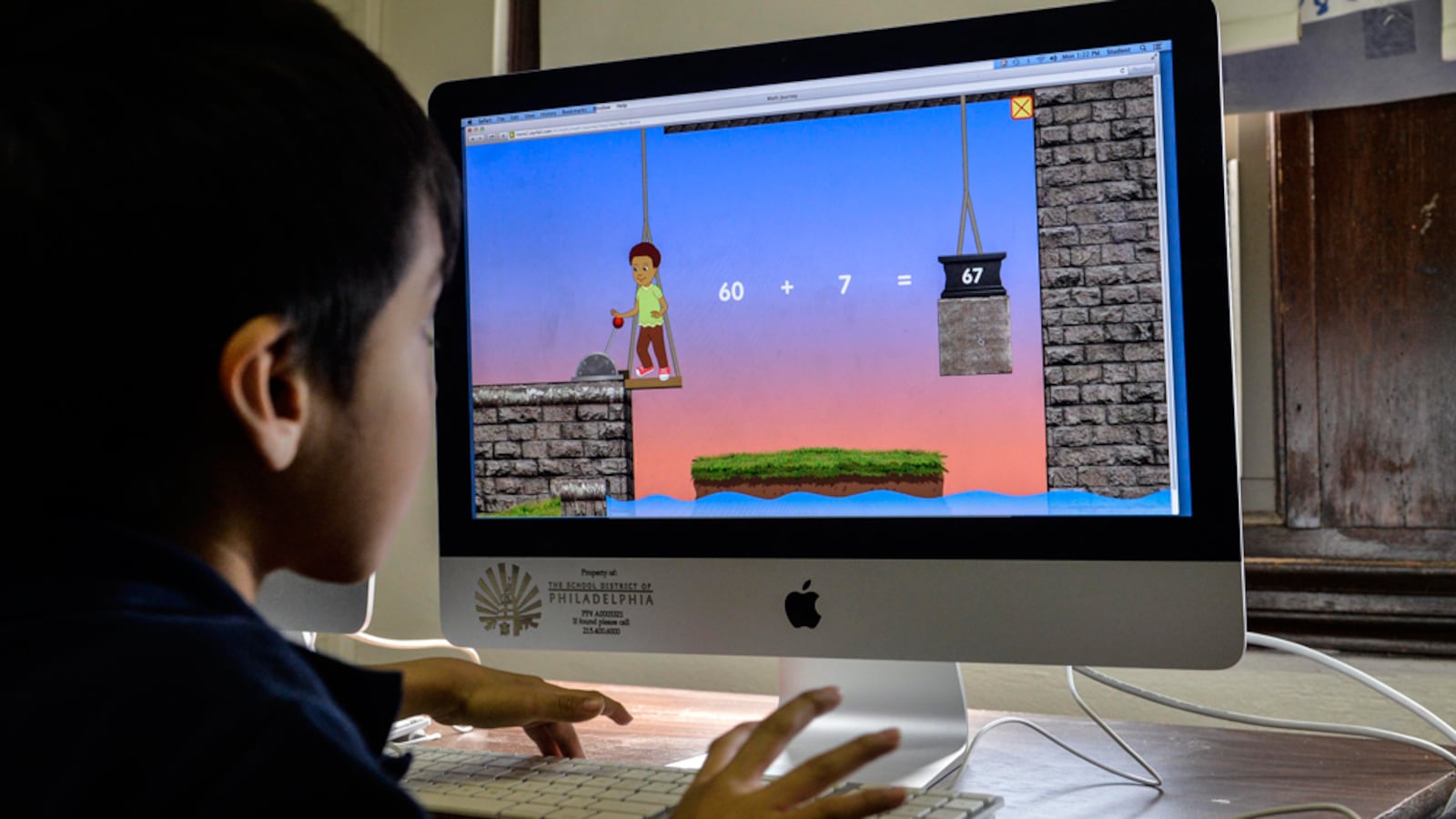This article was originally published in The Notebook. In August 2020, The Notebook became Chalkbeat Philadelphia.
Officials say parents and students can expect every District school to have some basic hardware and software. Some will also offer various next-level elements.
In addition, every principal has a variety of options for making schools more tech-friendly. Officials stress that leadership is critical. So families seeking to assess a school for technology should find out not just what kind of hardware and classes it has, but how it integrates technology with classwork and how it is planning to improve.
Here are some basics to look for.
Schools should have:
• Computer lab for individual work and skill-building.
• Classroom computers: enough for all students to have some access.
• Laptop/Chromebook cart.
• Smartboards in some classrooms.
• “Internet Safety Plan” with instructions for all staff and students in basic Internet safety, social network policies, etc.
Schools can add:
• Dedicated technology instructor tasked with bringing tech to classrooms and integrating it with ongoing lessons.
• Smartboards in all classrooms.
• Kindergarten and 1st grade: dedicated tablet carts; permanent “digital stations” in classrooms; instruction in coding and web skills; social networking can be introduced with care.
• Elementary and up: Chromebook access, up to 1:1; video, research, individual, and collaborative projects; blended learning.
Options available to principals:
• Elective class in basic computer skills.
• Google Apps for Education package, including student email.
• Bring your own device (BYOD): Allows students to bring handheld devices into school and class.
• Social media for staff, like Twitter and Facebook: District recommends staff use with care, in accordance with District safe-use policies.
• Office of Information Technology resources: recommended programs and content; recommended strategies and standards; guidance in developing partnerships and resources.
• Partnerships with outside organizations: Principals are encouraged to build networks of support.
If you want to dig deeper:
The District has recommended standards developed by the International Society for Technology in Education (ISTE) and the Common Core.
ISTE Standards, initially developed by NASA, contain detailed recommendations for students, teachers, and administrators that are designed to encourage higher-level learning, responsible digital citizenship, a dynamic digital environment, and college and career readiness.
Common Core State Standards, which set benchmarks for student learning in all academic subjects, call for the integration of basic and advanced computer skills in courses of study like math.


